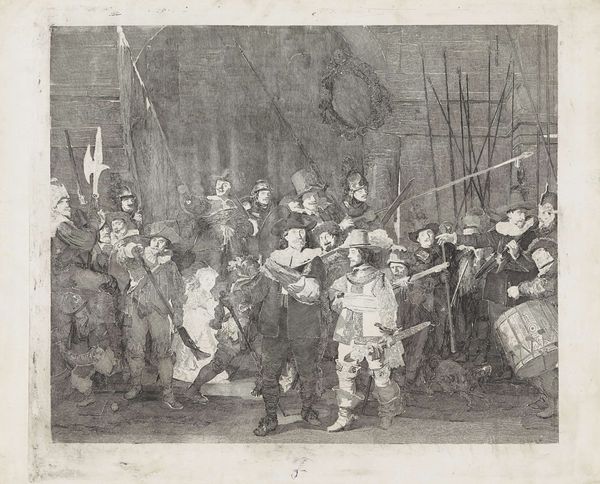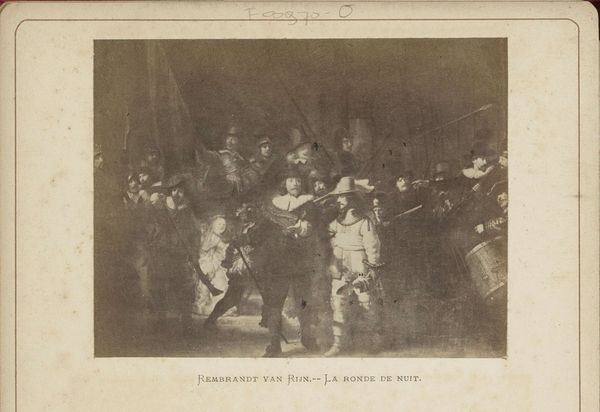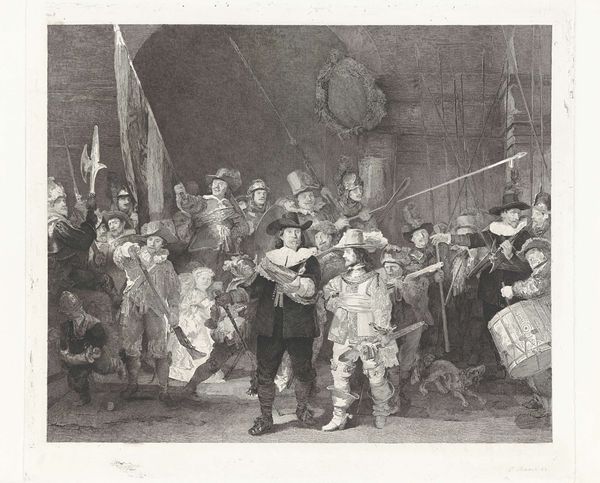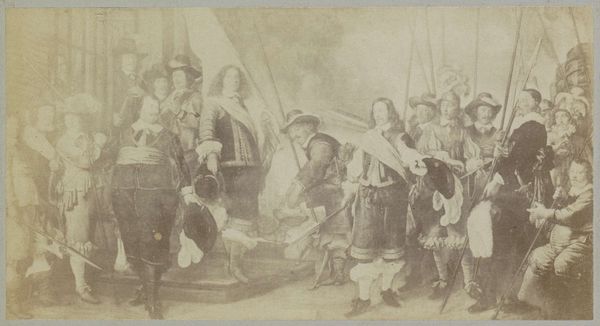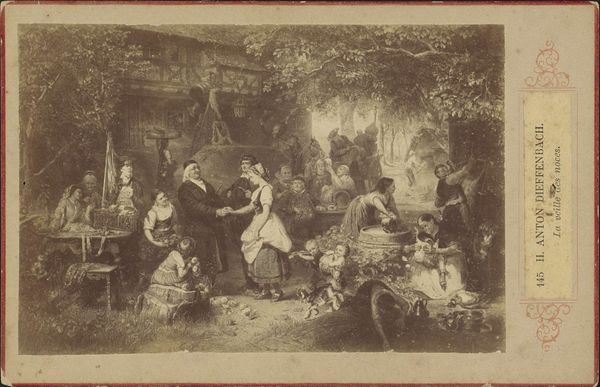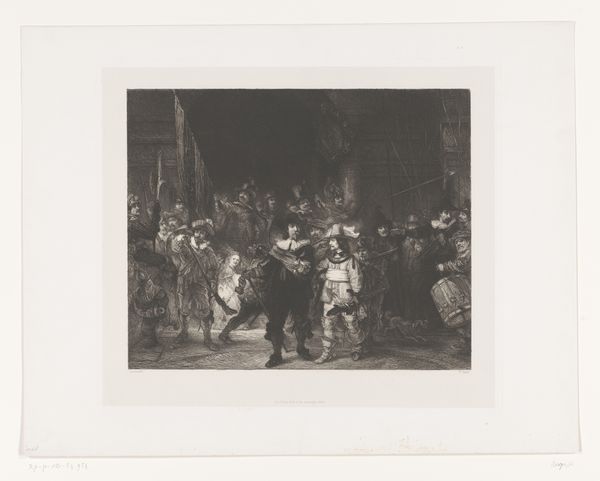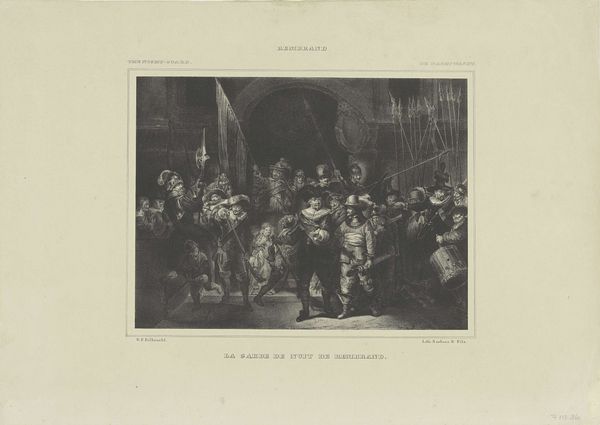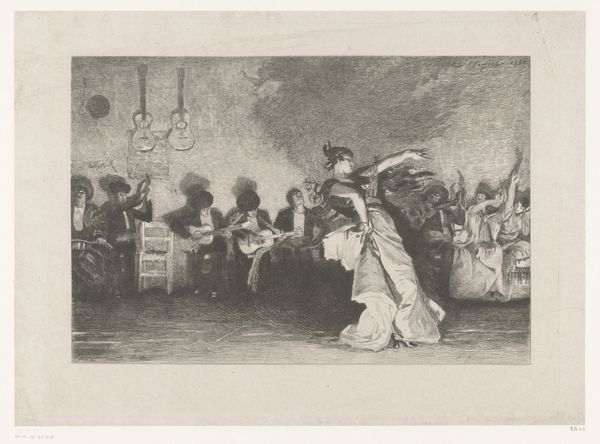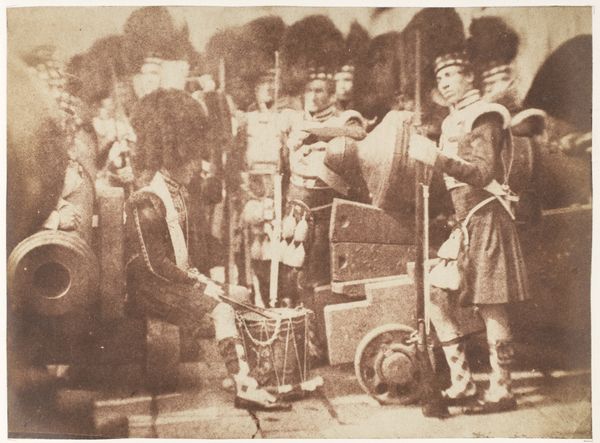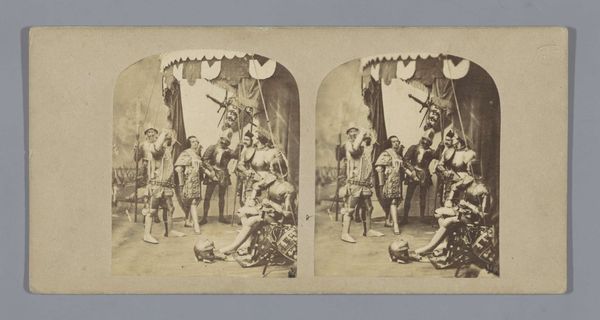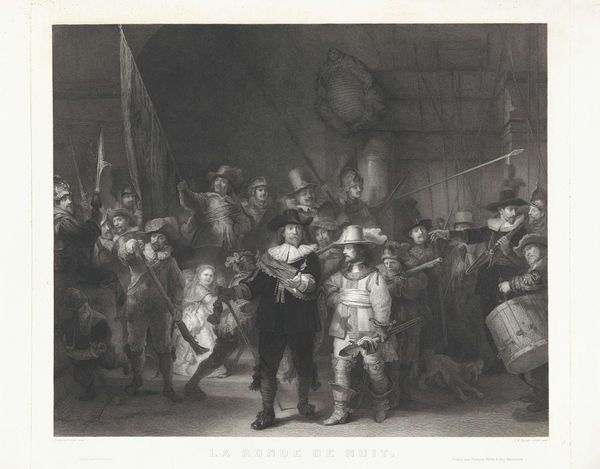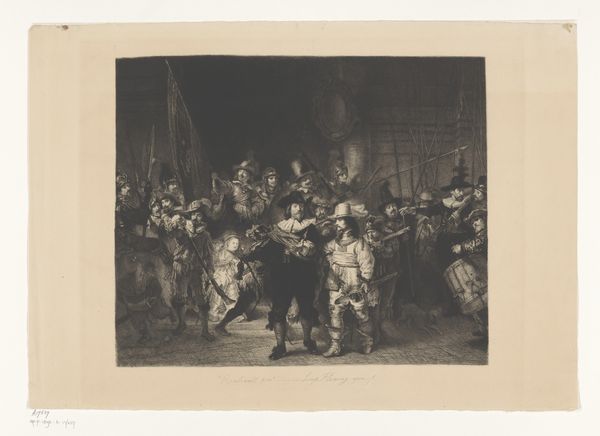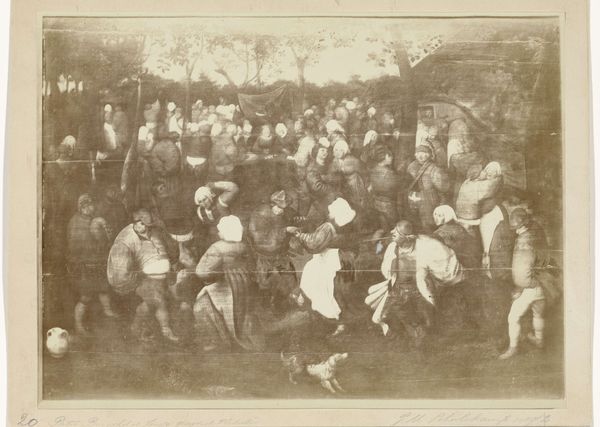
Fotoreproductie van het schilderij 'De Nachtwacht' door Rembrandt Harmensz. van Rijn 1893 - 1912
0:00
0:00
drawing, pencil, charcoal
#
drawing
#
dutch-golden-age
#
pencil sketch
#
charcoal drawing
#
pencil drawing
#
group-portraits
#
pencil
#
genre-painting
#
charcoal
#
watercolor
#
realism
Dimensions: height 96 mm, width 116 mm
Copyright: Rijks Museum: Open Domain
Editor: So, here we have a reproduction of Rembrandt van Rijn's 'The Night Watch,' rendered in pencil and charcoal sometime between 1893 and 1912 by Johan Marinus Schalekamp. What strikes me is how this rendition, even without color, manages to convey the original's dynamic energy. What do you see in this piece? Curator: Beyond just a copy, it is also a reading, right? This work, especially as a reproduction made decades later, prompts questions about power, representation, and the very idea of the "Dutch Golden Age." Consider the historical context: late 19th/early 20th century Europe was obsessed with national identity. So, what does choosing 'The Night Watch' as a subject – a civic guard, symbols of Dutch power – tell us about the artist's or the commissioner's concerns at that time? Editor: That’s fascinating! I hadn’t considered it as anything beyond a copy. Were these civic guards exclusively male? What can that tell us about the dynamics of power at play? Curator: Absolutely. These guards were almost exclusively men, reflecting the social structures and the exclusion of women from positions of power and civic life. Consider, too, the potential for this image to bolster or challenge those very structures, even in reproduction. Is it reinforcing an idealized, masculine version of history, or subtly critiquing it through its reinterpretation? How does Schalekamp treat these figures? Editor: The stark contrast and the close attention to detail feels reverential. Curator: Perhaps, but let's not forget that copies also serve a democratizing function, making art accessible. In its own way, Schalekamp’s work makes Rembrandt and those Dutch values available, if only in trace. Editor: This has totally shifted my perspective. Now I'm thinking about this artwork in a completely new way, as a conversation about history and power. Curator: Exactly. Seeing art as part of a bigger dialogue is how we create more pathways towards an understanding of intersectional narratives, personal identity, and the politics ingrained in everyday life.
Comments
No comments
Be the first to comment and join the conversation on the ultimate creative platform.
